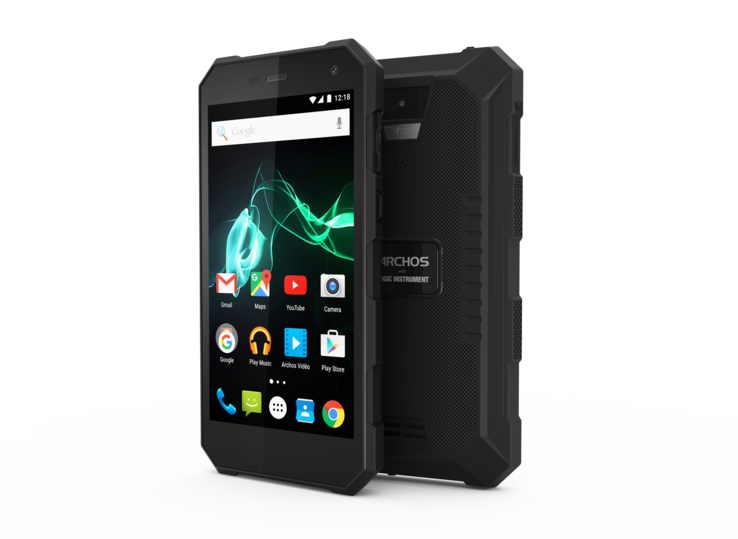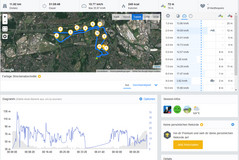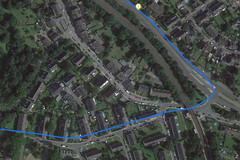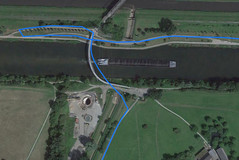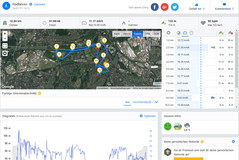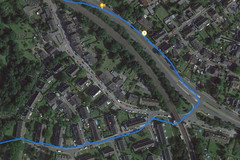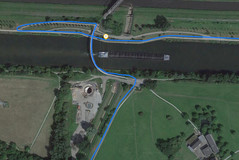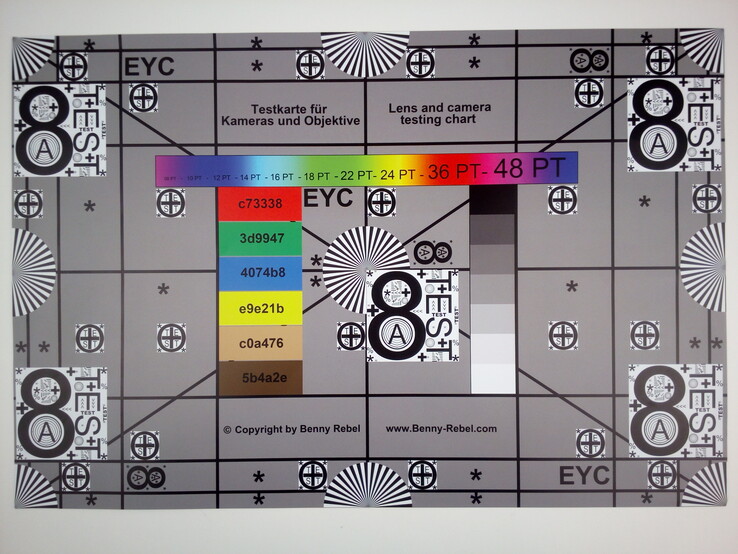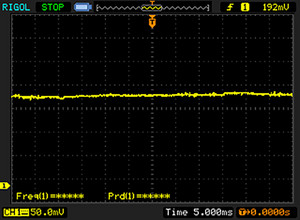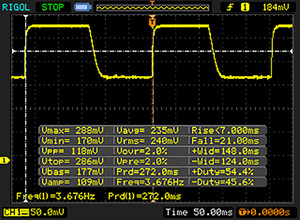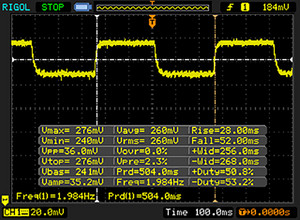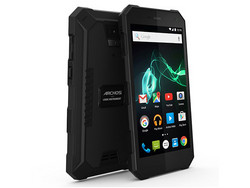爱可视 50 Saphir 智能手机简短评测
» Notebookcheck多媒体笔记本电脑Top 10排名
» Notebookcheck游戏笔记本电脑Top 10排名
» Notebookcheck低价办公/商务笔记本电脑Top 10排名
» Notebookcheck高端办公/商务笔记本电脑Top 10排名
» Notebookcheck工作站笔记本电脑Top 10排名
» Notebookcheck亚笔记本电脑Top 10排名
» Notebookcheck超级本产品Top 10排名
» Notebookcheck变形本产品Top 10排名
» Notebookcheck平板电脑Top 10排名
» Notebookcheck智能手机Top 10排名
» Notebookcheck评测过最出色的笔记本电脑屏幕
» Notebookcheck售价500欧元以下笔记本电脑Top 10排名
» Notebookcheck售价300欧元以下笔记本电脑Top 10排名
| Networking | |
| iperf3 transmit AX12 | |
| Huawei P8 lite 2017 | |
| Archos 50 Saphir | |
| Asus Zenfone 3 Max ZC520TL | |
| Alcatel Shine Lite | |
| iperf3 receive AX12 | |
| Huawei P8 lite 2017 | |
| Asus Zenfone 3 Max ZC520TL | |
| Alcatel Shine Lite | |
| Archos 50 Saphir | |
| |||||||||||||||||||||||||
Brightness Distribution: 87 %
Center on Battery: 543 cd/m²
Contrast: 940:1 (Black: 0.58 cd/m²)
ΔE ColorChecker Calman: 12.5 | ∀{0.5-29.43 Ø4.78}
ΔE Greyscale Calman: 15.4 | ∀{0.09-98 Ø5}
Gamma: 1.87
CCT: 12705 K
| Archos 50 Saphir IPS, 1280x720, 5" | Honor 5C IPS, 1920x1080, 5.2" | Huawei P8 lite 2017 IPS, 1920x1080, 5.2" | Asus Zenfone 3 Max ZC520TL IPS, 1280x720, 5.2" | Alcatel Shine Lite IPS, 1280x720, 5" | Samsung Galaxy J5 2016 AMOLED, 1280x720, 5.2" | |
|---|---|---|---|---|---|---|
| Screen | 22% | 35% | 24% | 14% | 22% | |
| Brightness middle (cd/m²) | 545 | 515 -6% | 575 6% | 507 -7% | 425 -22% | 289 -47% |
| Brightness (cd/m²) | 527 | 498 -6% | 559 6% | 474 -10% | 406 -23% | 291 -45% |
| Brightness Distribution (%) | 87 | 93 7% | 91 5% | 85 -2% | 90 3% | 96 10% |
| Black Level * (cd/m²) | 0.58 | 0.49 16% | 0.39 33% | 0.53 9% | 0.45 22% | |
| Contrast (:1) | 940 | 1051 12% | 1474 57% | 957 2% | 944 0% | |
| Colorchecker dE 2000 * | 12.5 | 6.2 50% | 5.2 58% | 4.7 62% | 7.6 39% | 4.7 62% |
| Colorchecker dE 2000 max. * | 24.4 | 11.4 53% | 10.3 58% | 7.2 70% | 15.6 36% | 7.3 70% |
| Greyscale dE 2000 * | 15.4 | 7.4 52% | 7.2 53% | 4.8 69% | 6.6 57% | 3 81% |
| Gamma | 1.87 118% | 2.28 96% | 2.4 92% | 2.25 98% | 2.44 90% | 2.03 108% |
| CCT | 12705 51% | 8664 75% | 7224 90% | 6441 101% | 7853 83% | 6291 103% |
* ... smaller is better
Screen Flickering / PWM (Pulse-Width Modulation)
| Screen flickering / PWM not detected | |||
In comparison: 53 % of all tested devices do not use PWM to dim the display. If PWM was detected, an average of 8111 (minimum: 5 - maximum: 343500) Hz was measured. | |||
Display Response Times
| ↔ Response Time Black to White | ||
|---|---|---|
| 28 ms ... rise ↗ and fall ↘ combined | ↗ 7 ms rise | |
| ↘ 21 ms fall | ||
| The screen shows relatively slow response rates in our tests and may be too slow for gamers. In comparison, all tested devices range from 0.1 (minimum) to 240 (maximum) ms. » 70 % of all devices are better. This means that the measured response time is worse than the average of all tested devices (20.2 ms). | ||
| ↔ Response Time 50% Grey to 80% Grey | ||
| 80 ms ... rise ↗ and fall ↘ combined | ↗ 28 ms rise | |
| ↘ 52 ms fall | ||
| The screen shows slow response rates in our tests and will be unsatisfactory for gamers. In comparison, all tested devices range from 0.165 (minimum) to 636 (maximum) ms. » 99 % of all devices are better. This means that the measured response time is worse than the average of all tested devices (31.6 ms). | ||
| AnTuTu v6 - Total Score | |
| Huawei P8 lite 2017 | |
| Honor 5C | |
| Archos 50 Saphir | |
| Asus Zenfone 3 Max ZC520TL | |
| Alcatel Shine Lite | |
| Samsung Galaxy J5 2016 | |
| Geekbench 4.0 | |
| 64 Bit Single-Core Score | |
| Huawei P8 lite 2017 | |
| Archos 50 Saphir | |
| Asus Zenfone 3 Max ZC520TL | |
| Alcatel Shine Lite | |
| 64 Bit Multi-Core Score | |
| Huawei P8 lite 2017 | |
| Archos 50 Saphir | |
| Alcatel Shine Lite | |
| Asus Zenfone 3 Max ZC520TL | |
| GFXBench (DX / GLBenchmark) 2.7 | |
| T-Rex Onscreen | |
| Honor 5C | |
| Archos 50 Saphir | |
| Huawei P8 lite 2017 | |
| Asus Zenfone 3 Max ZC520TL | |
| Alcatel Shine Lite | |
| Samsung Galaxy J5 2016 | |
| 1920x1080 T-Rex Offscreen | |
| Honor 5C | |
| Huawei P8 lite 2017 | |
| Archos 50 Saphir | |
| Asus Zenfone 3 Max ZC520TL | |
| Alcatel Shine Lite | |
| Samsung Galaxy J5 2016 | |
| GFXBench 3.0 | |
| on screen Manhattan Onscreen OGL | |
| Archos 50 Saphir | |
| Huawei P8 lite 2017 | |
| Honor 5C | |
| Asus Zenfone 3 Max ZC520TL | |
| Alcatel Shine Lite | |
| Samsung Galaxy J5 2016 | |
| 1920x1080 1080p Manhattan Offscreen | |
| Honor 5C | |
| Huawei P8 lite 2017 | |
| Archos 50 Saphir | |
| Asus Zenfone 3 Max ZC520TL | |
| Alcatel Shine Lite | |
| Samsung Galaxy J5 2016 | |
| GFXBench 3.1 | |
| on screen Manhattan ES 3.1 Onscreen | |
| Archos 50 Saphir | |
| Huawei P8 lite 2017 | |
| Honor 5C | |
| Asus Zenfone 3 Max ZC520TL | |
| Alcatel Shine Lite | |
| Samsung Galaxy J5 2016 | |
| 1920x1080 Manhattan ES 3.1 Offscreen | |
| Huawei P8 lite 2017 | |
| Honor 5C | |
| Archos 50 Saphir | |
| Asus Zenfone 3 Max ZC520TL | |
| Alcatel Shine Lite | |
| Samsung Galaxy J5 2016 | |
| PCMark for Android - Work 2.0 performance score | |
| Archos 50 Saphir | |
| Samsung Galaxy J5 2016 | |
| Mozilla Kraken 1.1 - Total | |
| Alcatel Shine Lite | |
| Asus Zenfone 3 Max ZC520TL | |
| Samsung Galaxy J5 2016 | |
| Archos 50 Saphir | |
| Honor 5C | |
| Huawei P8 lite 2017 | |
| Octane V2 - Total Score | |
| Huawei P8 lite 2017 | |
| Honor 5C | |
| Archos 50 Saphir | |
| Samsung Galaxy J5 2016 | |
| Asus Zenfone 3 Max ZC520TL | |
| Alcatel Shine Lite | |
| JetStream 1.1 - Total Score | |
| Huawei P8 lite 2017 | |
| Honor 5C | |
| Archos 50 Saphir | |
| Samsung Galaxy J5 2016 | |
| Asus Zenfone 3 Max ZC520TL | |
| Alcatel Shine Lite | |
* ... smaller is better
(+) The maximum temperature on the upper side is 38.9 °C / 102 F, compared to the average of 35.2 °C / 95 F, ranging from 21.9 to 247 °C for the class Smartphone.
(+) The bottom heats up to a maximum of 39.8 °C / 104 F, compared to the average of 34 °C / 93 F
(±) In idle usage, the average temperature for the upper side is 32.2 °C / 90 F, compared to the device average of 32.9 °C / 91 F.
Archos 50 Saphir audio analysis
(+) | speakers can play relatively loud (89.8 dB)
Bass 100 - 315 Hz
(-) | nearly no bass - on average 20.4% lower than median
(±) | linearity of bass is average (8.7% delta to prev. frequency)
Mids 400 - 2000 Hz
(+) | balanced mids - only 3.9% away from median
(+) | mids are linear (4% delta to prev. frequency)
Highs 2 - 16 kHz
(+) | balanced highs - only 1.9% away from median
(+) | highs are linear (4.8% delta to prev. frequency)
Overall 100 - 16.000 Hz
(+) | overall sound is linear (14.7% difference to median)
Compared to same class
» 2% of all tested devices in this class were better, 2% similar, 96% worse
» The best had a delta of 11%, average was 35%, worst was 134%
Compared to all devices tested
» 18% of all tested devices were better, 4% similar, 77% worse
» The best had a delta of 4%, average was 24%, worst was 134%
Honor 5C audio analysis
(+) | speakers can play relatively loud (87.9 dB)
Bass 100 - 315 Hz
(-) | nearly no bass - on average 30.9% lower than median
(±) | linearity of bass is average (8.1% delta to prev. frequency)
Mids 400 - 2000 Hz
(±) | higher mids - on average 7.1% higher than median
(±) | linearity of mids is average (8.8% delta to prev. frequency)
Highs 2 - 16 kHz
(±) | higher highs - on average 12.1% higher than median
(+) | highs are linear (2.9% delta to prev. frequency)
Overall 100 - 16.000 Hz
(-) | overall sound is not linear (31.7% difference to median)
Compared to same class
» 81% of all tested devices in this class were better, 2% similar, 16% worse
» The best had a delta of 11%, average was 35%, worst was 134%
Compared to all devices tested
» 90% of all tested devices were better, 2% similar, 8% worse
» The best had a delta of 4%, average was 24%, worst was 134%
| Off / Standby | |
| Idle | |
| Load |
|
Key:
min: | |
| Archos 50 Saphir 5000 mAh | Honor 5C 3000 mAh | Huawei P8 lite 2017 3000 mAh | Asus Zenfone 3 Max ZC520TL 4100 mAh | Alcatel Shine Lite 2460 mAh | Samsung Galaxy J5 2016 3100 mAh | |
|---|---|---|---|---|---|---|
| Power Consumption | 3% | -30% | -4% | 24% | 34% | |
| Idle Minimum * (Watt) | 0.65 | 0.89 -37% | 1.44 -122% | 0.74 -14% | 0.6 8% | 0.61 6% |
| Idle Average * (Watt) | 1.9 | 2.07 -9% | 2.47 -30% | 2.04 -7% | 1.49 22% | 1.41 26% |
| Idle Maximum * (Watt) | 2.05 | 2.15 -5% | 2.58 -26% | 2.22 -8% | 1.66 19% | 1.51 26% |
| Load Average * (Watt) | 6.14 | 3.46 44% | 4.55 26% | 5.57 9% | 3.75 39% | 2.56 58% |
| Load Maximum * (Watt) | 6.54 | 5.18 21% | 6.3 4% | 6.59 -1% | 4.57 30% | 3.1 53% |
* ... smaller is better
| Archos 50 Saphir 5000 mAh | Honor 5C 3000 mAh | Huawei P8 lite 2017 3000 mAh | Asus Zenfone 3 Max ZC520TL 4100 mAh | Alcatel Shine Lite 2460 mAh | Samsung Galaxy J5 2016 3100 mAh | |
|---|---|---|---|---|---|---|
| Battery runtime | ||||||
| WiFi v1.3 (h) | 16.2 | 9.7 -40% | 10.1 -38% | 13.6 -16% | 10.8 -33% | 10.7 -34% |
Pros
Cons
来自法国生产商爱可视的户外智能手机50 Saphir的目标用户群体十分特别。它的笨重机身也证明了这一点,它应该足够坚固可以承受坠落的冲击,但可能并不容易放进口袋中。它也是“唯一”一款通过了IP68认证,采用Gorilla 4代玻璃的设备,其他智能手机都没有考虑过为此而采用如此笨重的机身设计。
这台智能手机在我们的测试中没有暴露出任何严重缺陷,但出了超长的续航和双SIM卡支持,它也没有什么特别的亮点。在性能上它表现中规中矩,扬声器效果正常,但是对于户外用途我们期待更好的GPS性能。
如果你需要一台坚固的设备的话,爱可视50 Saphir户外智能手机是个不错的选择。这也是因为它并没有什么竞争对手,不过这可能很快有所改变(三星Galaxy Xcover 4)。
目前,如果你想要购买一台具有三防功能的实惠型设备的话,市场上并没有什么更多的选择。如果你只是偶尔需要在户外使用的话,它厚重的机身在日常使用中可能会带来一些不便。如果你可以等待一段时间的话,可以参考一下三星Galaxy Xcover 4。它将在几周后上市,可以提供相同的功能,却搭配相对更薄的机身。
注:本文是基于完整评测的缩减版本,阅读完整的英文评测,请点击这里。
Archos 50 Saphir
- 03/06/2017 v6 (old)
Andreas Osthoff




